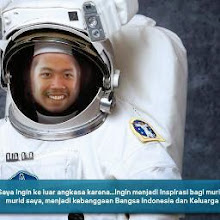"Manusia tanpa pertolongan Yang Maha Pencipta Alam Raya bagaikan butiran debu Cosmos"
~Arip~
Frontiers and Controversies in Astrophysics
| Lecture 7 - Direct Imaging of Exoplanets |
Overview:
Class begins with a problem on transits and learning what information astronomers obtain through observing them. For example, radii of stars can be estimated. Furthermore, applying the Doppler shift method, one can find the mass of a star. Finally, a star's density can be calculated. A second method for identifying planets around stars is introduced: the astrometry method. The method allows for an extremely accurate assessment of a star's precise position in the sky. Special features of the astrometry method are discussed and a number of problems are solved. A short summary is given on the three methods astronomers use to identify exoplanets. Class ends with an overview of upcoming space missions and the hope of detecting the presence of biological activity on other planet.
Problem sets/Reading assignment:
None assignedCourse Media
Transcript
htmlAudio
mp3Low Bandwidth Video
mov [100MB]High Bandwidth Video
mov [500MB]Resources:
Class Notes - Lecture 7 [PDF]Midterm Exam 1 Preparation Handout [PDF]
Sample Midterm Exam (2006) [PDF]
Test "Article" for Sample Midterm (2006) [PDF]
Sample Midterm Exam Solutions (2006) [PDF]
Section Activity 2: Planet Density [PDF]
Section Activity 2: Planet Density Answers [PDF]
Sumber:
1. The University of Yale Open Course Ware
2. Professor Bailyn's guide to Extrasolar Planet Websites
http://www.astro.yale.edu/bailyn/astro160/planets.html
Ucapan Terima Kasih:
1. Bapak. Prof. Dr. Ing. H. B. J. Habibie.
2. Departemen Pendidikan Nasional
3. Kementrian Riset dan Teknologi
4. Lembaga Penerbangan dan Antariksa Nasional
Disusun Ulang Oleh:
Arip Nurahman
Department of Physics, Indonesia University of Education
&
Follower Open Course Ware at MIT-Harvard University, Cambridge. U.S.A.
Semoga Bermanfaat dan Terima Kasih
.jpg)























